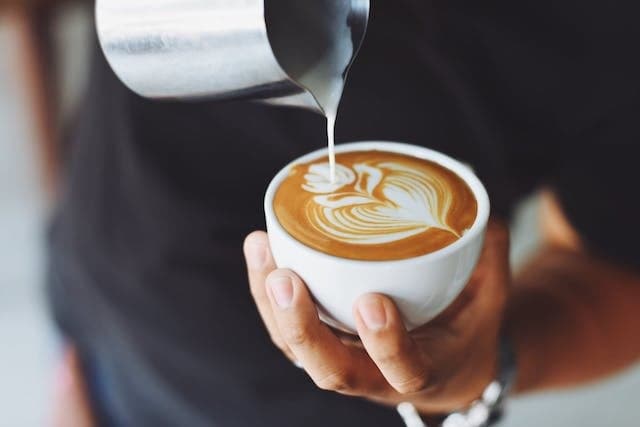Why Europe’s fika capital isn’t actually in Sweden
Swedes are crazy about coffee. They’re so crazy about it that they’ve even coined a special word for a simple coffee break.

Fika - taking time to enjoy coffee and a bite to eat with a friend or colleague - is a cornerstone of Swedish culture. If the country offered a Swedish 101 course for newbies, fika would probably be the first subject taught in the curriculum. Followed by a mandatory break for fika.
But what if we told you that there’s a European city where fika is taken so seriously that its coffee house culture is protected by UNESCO world heritage? If you’re as hooked on java as the Swedes are, an extended coffee break in Vienna is just the cultural pilgrimage that the barista ordered. Follow in the footsteps of some of Vienna’s most notable past inhabitants like Mozart, Beethoven, Klimt and Freud and soak in the gemütliche (cozy) atmosphere of the city’s famous coffee houses.
Presenting four reasons why all coffee lovers should visit Vienna.
It’s bean around a long time
Coffee first arrived in Vienna courtesy of a failed Turkish invasion in 1683. Forced to flee, the Ottoman army left behind sacks of coffee beans, initially assumed to be camel feed. Allied military officer Jerzy Francieszek Kulczychi had spent time in captivity in Turkey and knew that the unidentified beans could be brewed into delicious cups of liquid energy. The beans were roasted, a drop of milk was added, and Viennese coffee culture was born.4:00am PDT
It wasn’t long before elegant coffee houses sprung up all over the city. Today, these establishments are still the cultural heart of Vienna -- places to while away the day sipping high-quality coffee in (often palatial) built-for-purpose spaces. Austrian writer Stefan Zweig once wrote that the coffee houses are ‘a sort of democratic club, open to everyone for the price of a cheap cup of coffee, where every guest can sit for hours with this little offering, to talk, write, play cards, receive post and above all consume an unlimited number of newspapers and journals.’
There’s a latte variety
Swedes are big fans of a bryggkaffe (brew/filter coffee, often taken without milk) and are rarely seen without a cup of black coffee in hand. But one can’t claim to be a true coffee connoisseur without extensive knowledge of the many different ways coffee can be prepared. There are dozens of different varieties of Viennese coffee, from traditional styles to third-wave artisanal brews. You could argue that some ‘Viennese creations’ are suspiciously similar to varieties of coffee found elsewhere in the world, but there are also many which are wholly unique to the Austrian capital.
Take the Einspänner, a shot of strong espresso topped with plenty of whipped cream, named after the one-horse carriage which required just one hand, leaving the other free for holding a cup of coffee. Then there’s the Cafe Maria Theresia, a traditional Viennese recipe prepared from black coffee with warming orange liqueur and a dollop of cream. Not forgetting the Verlängerter, an espresso with added hot water for when you want to prolong your espresso hit.
Nice buns
Napoleon and Josephine, Wills and Kate...coffee and cake. Some things just go together. And so naturally Vienna has a long tradition of baking some of the most decadent delights known to man. From cream-filled cakes and flaky pastries to slabs of chocolate cake slathered in shiny chocolate ganache, there’s a treat that caters to every sweet tooth. It’s no wonder that cake was the first thing Viennese-born French Queen Marie Antoinette thought of when asked what the peasants should eat instead of bread.
Try a sugared violet, the favourite sweet of the beautiful but tragic Empress Sisi, at Demel, once the royal patisserie; indulge yourself with a Buchteln - a sweet Austrian bun served with plum jam - at the iconic Cafe Hawelka; and have your cake and eat it at classy Cafe Sacher (the birthplace of Sacher torte - the aforementioned chocolate cake which is, perhaps, the most famous cake of all time).
Use code CoffeeBreak19SE for 165 SEK off flights from Sweden to Vienna. Click here to redeem*.
Coffee in the clouds
Hop on an Austrian Airlines flight from Stockholm or Gothenburg and you can be in Vienna in just a couple of hours. The planes are designed to reflect the gemütliche ambience of a Viennese coffee house with premium cups of Julius Meinl coffee served onboard, so you can start your coffee odyssey precisely as you mean to go on.
*Offer valid until 31st May 2020
Header image: Coffee Geek Espresso Beans
This article was produced by The Local Creative Studio and sponsored by Austrian Airlines.
This content was paid for by an advertiser and produced by The Local's Creative Studio.


Join the conversation in our comments section below. Share your own views and experience and if you have a question or suggestion for our journalists then email us at [email protected].
Please keep comments civil, constructive and on topic – and make sure to read our terms of use before getting involved.
Please log in here to leave a comment.